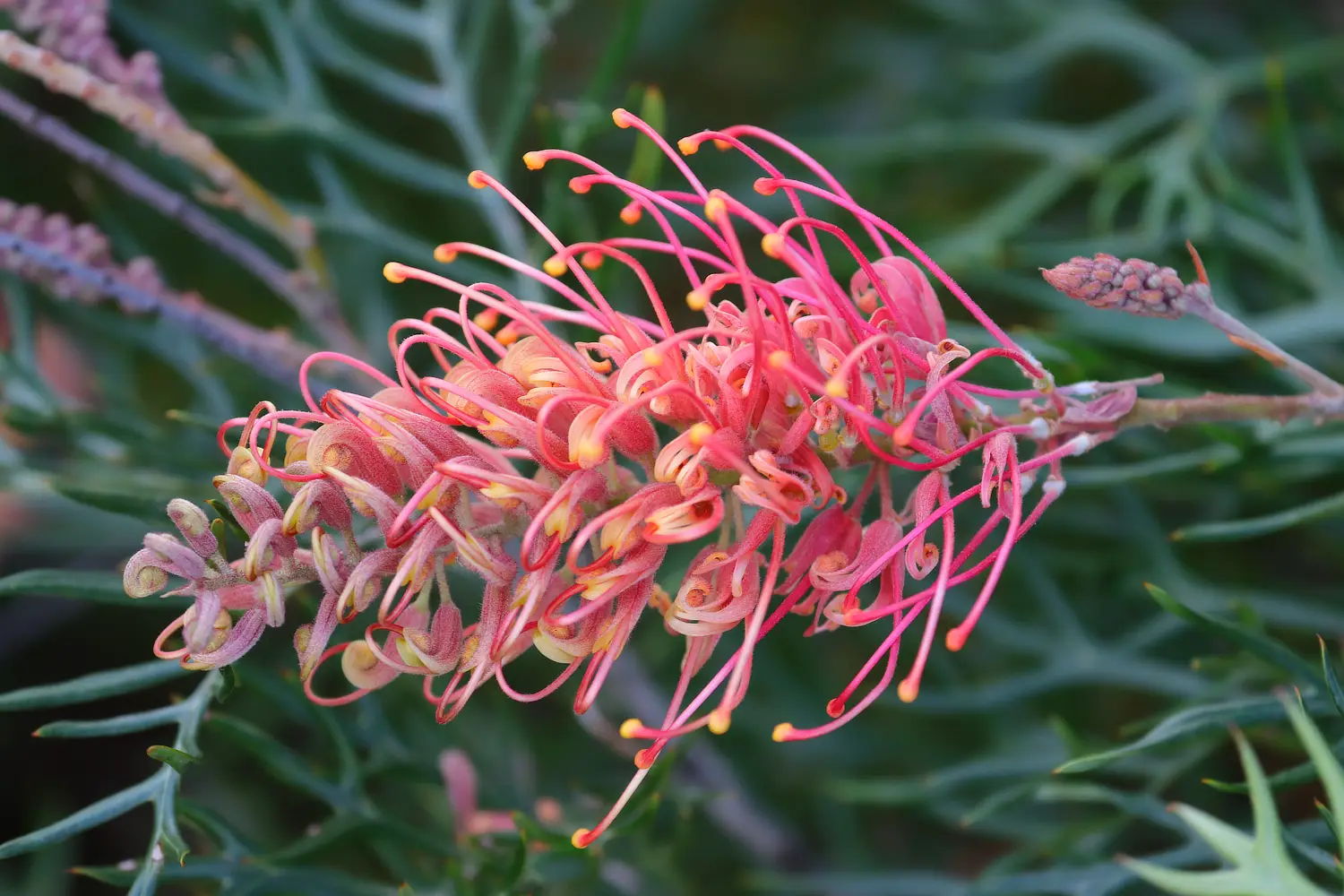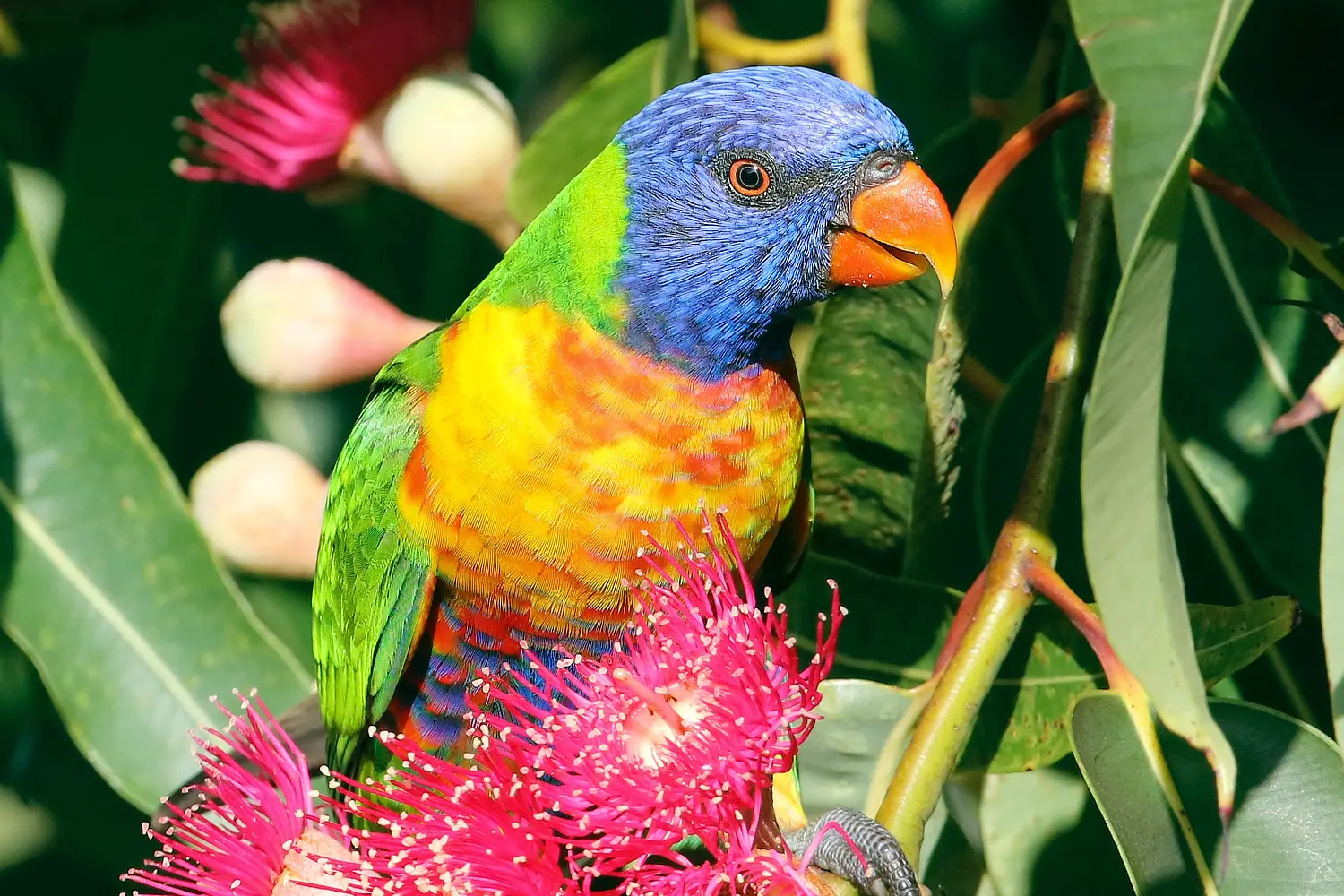Hedging is often thought of as a European element in the garden, using exotic species of plants, but hedging doesn’t always have to be in a formal garden or exclusively exotic either. There are many native species of plants that work well in our climate for hedging and can work in many styles of garden, be tightly clipped or looser for a natural appearance. They help to separate garden zones and remove unsightly views as well as create structure to a space by defining boundaries and garden beds.
Endemic plants, those that evolved in the area you will be planting them into require little soil preparation, they are used to the conditions and will thrive with minimal interference, just loosen the soil in a wide planting hole to help the first emerging roots. Those that are still native but from a different area will appreciate some help with the ground, dig through some compost and a native fertiliser but steer clear of manures as these can have adverse effects on the roots. Once planted sprinkle some soil wetting crystals around the disturbed ground and mulch with a coarse bark.
One of the best loose hedges is the callistemon, its fool proof and can tolerate drought, coastal conditions and frost as well as being adaptable to both clay and sandy soils. Callistemons come in a range of sizes too, from the lower growing (up to a meter) ‘Green John’, perfect for a low hedge, the medium sized ‘Macarthur’ will cover a fence to 1.8 meters, but not block out light and the taller ‘Slim’ to 3 meters. Whatever variety you go for I like to leave them a little loose as this promotes more flowers, perfect for attracting birds. Once flowering has finished you can trim the plant to keep it tidy, sometimes it’s hard to find the right time as they bloom so prolifically but if this is a problem early spring is a good time.
If you have salty coastal conditions and nothing will grow, try the Adenanthos or woolly bush, this native is very hardy to salt laden winds thanks to its incredibility tactile foliage. Almost silvery in colour this plant looks exactly as the common name makes it sound and it works perfectly as a wind break to help you grow more sensitive plants behind. If the foliage of this hedging plant isn’t enough for you it also gets a small red flower that is great for native wildlife.
Having your hedge double up as a wildlife and bird attracting element to the garden as well as a screen can only be a benefit and Grevilleas are a great way to have your cake and eat it. Much like the Callistemon they are incredibly versatile coping with heat, frost, salt and a range of soil types too. New modern varieties of grevillea also open up the rainbow as to what colour you can have in your garden, from subtle greens to flamboyant salmons and reds, as well as everything in-between. I like a variety called ‘Moonlight’ as it has bright creamy white flowers that illuminate a planting scheme, another fail safe is ‘Robyn Gordon’ and ‘Superb’.
If you are after a more formal look the lilli pilli is the plant for you but you will need to add compost to the soil to aid in the water retention. Naturally a rainforest tree but highly adaptable to the home garden its popular as the small leaves knit together to give a dense hedge. There are many varieties from different species including Syzygium, Waterhousia and Acmena. My favourite is the weeping lilli pilli as it has a beautiful lime green new growth and a pendulous habit to the foliage. If you are looking for a hedge in a narrow space the Syzygium ‘Pinnacle’ is a good option as it grows up to 6 meters in height but only takes up a meter in garden bed to do so.
For lower growing hedges the coastal rosemary Westringia is hard to beat. Grey, silver foliage highlights lower parts of the garden and being versatile to clipping you can leave it loose and sprawling or tight and topiarised just make sure you have good drainage as it doesn’t like wet feet or humid air. This plant is so good in 2015 the variety ‘Grey Box’ was awarded the plant of the year. Ornamental star like flowers in whites, pinks and even purples can be seen throughout the year.


